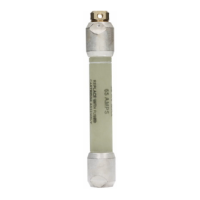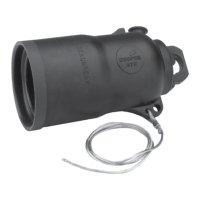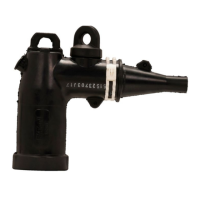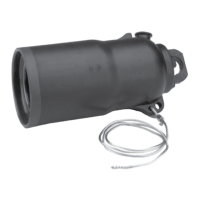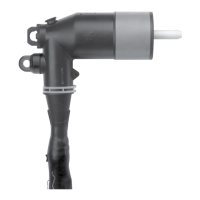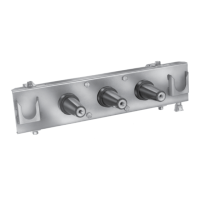values, upload settings which are specific to the control I.D.
number, and view data. The entire control database may be
downloaded.
Analysis of the data allows the user to verify the control
settings and analyze the conditions of the feeder as follows:
At the moment of the downloading (instantaneous
metering)
Maximum and minimum demand values since last reset
(time-tagged demand metering)
The profile of salient parameters (profile recorder)
For more information on connecting to the control and use
of ProView NXG software, see document MN225015EN
CL-7 Regulator Control ProView NXG Software Programming
Guide.
Data retrieval and settings uploading can also be performed
using a USB memory device and various associated
function codes. See Section7: Advanced Control
Features: USB memory device.
Digital SCADA
Refer to Section7: Advanced Control Features:
Communications and document MN225021EN, CL-7
Regulator Control Communications for information on
communications and physical interface.
Local operator security
Through the communications channel, the SCADA master
may read the CL-7 control data points, write to certain data
points, or reset certain data points. The technique of writing
to a data point is used for performing operations such as
changing settings like Set Voltage or Reverse Power Mode,
inhibiting automatic operation, or controlling the tap-changer
motor, etc. Following is a discussion of the levels of security
used to protect the local operator.
Supervisory switch
The CL-7 control is equipped with a Supervisory Off switch.
When this switch is not in the off condition (the switch
LED is not illuminated), SCADA may perform the normal
read, write, and reset activity. When the switch is in the
off condition (the switch LED is illuminated), SCADA may
only read the database. This affords protection to the local
operator at the front panel, while allowing the system
operator to maintain surveillance.
Control switch
If the local operator switches the CONTROL FUNCTION
switch to either OFF or LOCAL MANUAL, the control
internal circuitry prohibits SCADA from controlling the tap-
changer motor. Resets and other writes are allowed.
Active control security level
If the local operator changes the control active security
level to Operate level or above, or security override is set
to override the Operate level or higher, this does not inhibit
any SCADA activity. To inhibit SCADA writes and resets, the
local operator should turn the Supervisory switch to Off.
ote:N A local operator wishing to check automatic operation
should check to make sure that the Blocking Status,
FC 69, is set to Normal.
ote:N Changes to any of the communications parameters
take effect immediately.
Analog SCADA
The CL-7 control can be used with Analog SCADA systems.
Three general purpose inputs accessed on the control
connection terminal board have been programmed by
default for use as inputs for voltage reduction, Tap-
to-Neutral, and auto-tap blocking. Most back-panel
configurations also have provisions for remote motor control
and transducer connections.
Discrete voltage reduction
During voltage reduction, the control remains in the
automatic mode. Standard, fixed configuration logic
programmed into the control assigns General Purpose Input
1 (GPI 1) to be voltage reduction point 1. See Figure26
and Figure27 for the location of the physical connections.
This point can be used as point 1 for the Remote/Latch
mode of voltage reduction or as the single pulse point for
the Remote/Pulse mode of voltage reduction. If a voltage
reduction point 2 is desired for Remote/Latch or Remote/
Pulse, GPI 2 or GPI 3 can be reassigned or an auxiliary I/O
module can be added and a point assigned. A nominal 120
Vac must be supplied to the GPI point(s) to enable analog
voltage reduction. For information on configurable Logic,
reassignment of GPI points and assignment of auxiliary I/O
points to voltage reduction, see document MN225015EN,
CL-7 Regulator Control ProView NXG Software Programming
Guide.
If dry contacts are to be used for analog voltage reduction,
the voltage should be obtained at terminal V9 on the
terminal board, an example connection is shown in
Figure26. This whetting voltage is only available when
the control switch is in the Auto/Remote position. If whet
contacts are used, the connections should be as shown in
Figure27.
The terminal board contacts assigned as GPIs are:
GPI 1 is assigned to contact point 5.
GPI 2 is assigned to contact point J.
GPI 3 is assigned to contact point BR.
140
INSTALLATION, OPERATION, AND MAINTENANCE INSTRUCTIONS MN225003EN April 2018
CL-7 Voltage Regulator Control

